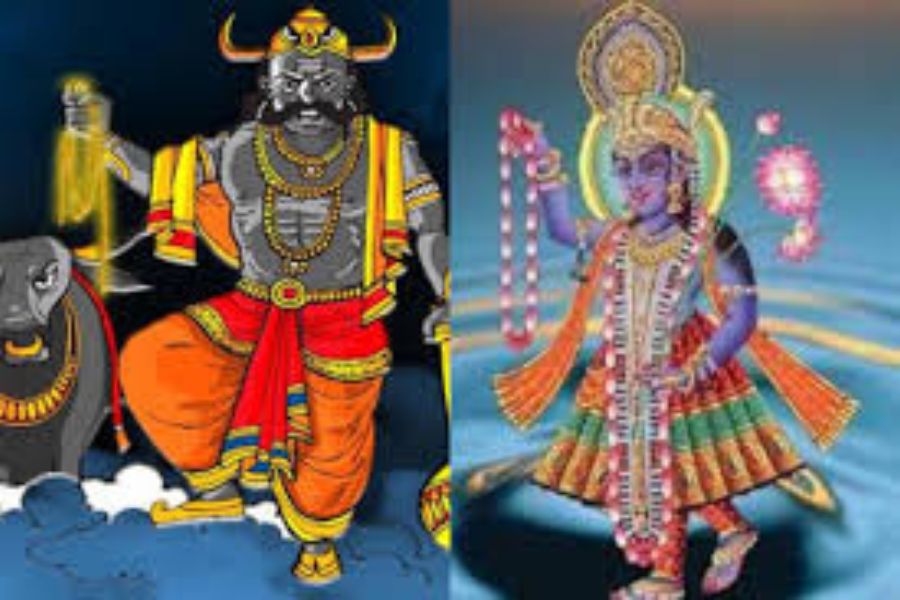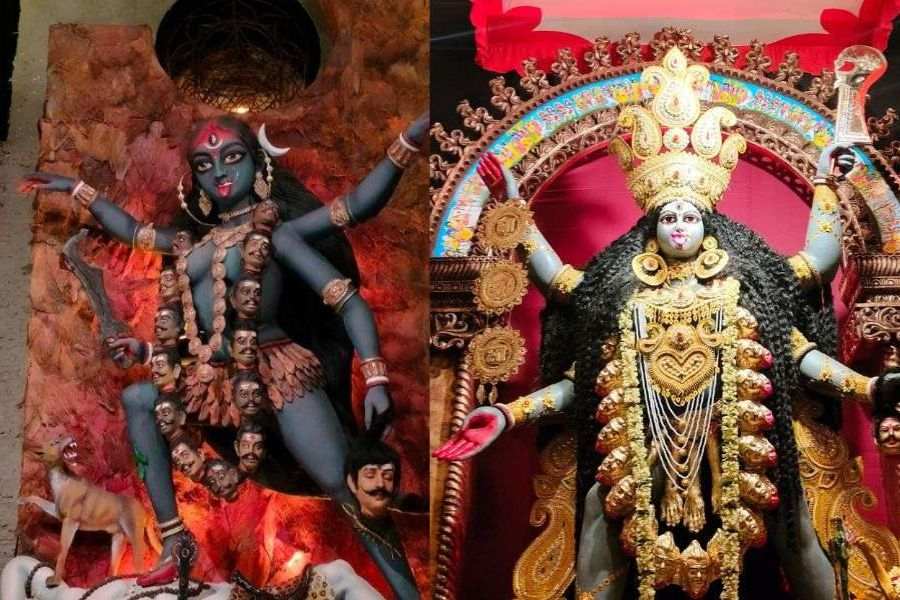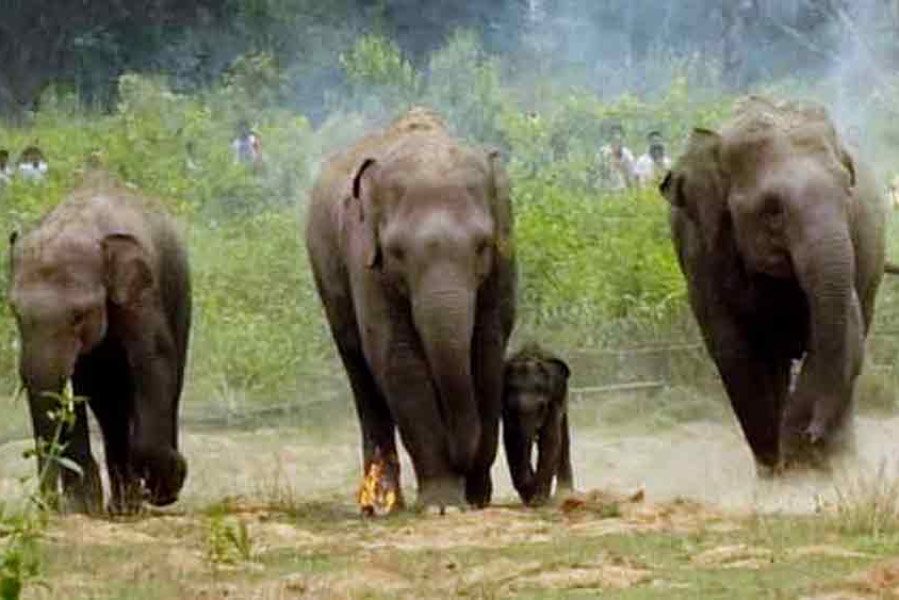
কী বললেন সাক্ষাৎকারে টিএমটি-ইন্ডিয়ার প্রধান
Wভারতে থার্টি মিটার টেলিস্কোপ বা টিএমটি-ইন্ডিয়া প্রকল্পের এক নম্বর ব্যাক্তিত্ব, ভারতে টিএমটি কোঅর্ডিনেশন সেন্টারের প্রোগ্রাম ডিরেক্টর বচম ঈশ্বর রেড্ডিকে আনন্দবাজারের তরফে পাঠানো হয়েছিল মোট দশটি প্রশ্ন। তাঁর জবাব হুবুহু তুলে ধরা হল।

নিজস্ব প্রতিবেদন
Q1) What are the largest ground-based telescopes presently available in India and in the world?
Reddy: 2.3-meter Vainu Bappu Telescope (or VBT) at Vainu Bappu Observatory (VBO), Kavalur in Tamilnadu about 160 Km from Bangalore (run by Indian Institute of Astrophysics) has been the biggest optical telescope since its commissioning in 1987. This was india’s largest telescope built indigenously.Recently, Arayabhatta Research Institute for Observational Science (ARIES), Nainital built 3.6-meter optical ground based telescope (known as Devstal Optical Telescope or DOT) at Devstal which has been completed in late 2015. Currently, this is the largest aperture telescope in India. Internationally, there are about a dozen 8-10-meter aperture ground based optical and infrared telescopes. All of them are owned by Europe, USA and Japan. These have been in the use since 1990s.
Q-2) Why do we need larger telescopes?
Reddy: Two principle reasons for larger and larger telescopes are: a) to gather more photons or flux which is proportional to square of aperture size (D^2: D is the aperture). This means larger the aperture more flux and hence one can probe the universe much farther from earth. b) Larger the aperture better the resolution an ability to see objects which are very close to each other as separate objects. For example telescope of 30-m size provides a factor 3 better angular resolution compared to the larger 10-m telescope and about 9 times more flux in a given time.
With larger aperture telescopes one could study celestial objects that are much farther and in much more detail.
Q-3) What are the large ground-based optical telescopes under construction?
Reddy: Over the next decade, optical and IR astronomy will move from the present 10m class telescopes to the future Giant Segmented Mirror Telescopes (GSMTs) of diameters over 20 meters, signifying a major paradigm shift in the field of astronomy. By 2020, half of the world's astronomers will have access to the most powerful telescopes to unravel the mysteries of the Universe we live in. International consortia are planning to build three mega-size ground based optical and infrared telescopes: Giant Magellan Telescope (25-m; GMT, site: Los Companas, Chile), Thirty Meter Telescope (30-m; TMT, site: Mauna Kea, Hawaii, USA) and European-Extremely Large Telescope (39-m; E-ELT, site: Cerro Armazons, Chile). The GMT consortium is led by universities in the USA, Australia, South Korea, the EELT is primarily led by 14 European countries, and the TMT project is led by Univ. of California, Caltech (USA), Canada, Japan, China and India.
Q-4) Why India decided to join the Thirty Meter Telescope project?
Reddy: Building of projects like TMT requires huge capital and expertise in a number of cutting edge technologies. It thus became imperative that astronomers across the continents forge an alliance to build and operate one of the most ambitious and powerful telescopes on Earth to peek into the early stages of our universe, and understand and predict its evolution. For India, motivation to join in this scientific endeavour stems from three principal factors: (1) opportunity to carry out frontline research in astronomy, (2) technology transfers, (3) sharing the cost, which would be prohibitive for any single scientific organization. As a nation, it is of great importance and pride to be part of this noble endeavor. The international collaboration with TMT will bring home some much needed high-end technology into many fields. The knowledge transfer, especially in areas such as adaptive optics, precision manufacturing, astronomical detector systems, optical metrology and fabrication will expand the technology development efforts in the country.
Q-5) What's the cost India needs to bear for joining TMT?
Reddy: TMT project cost was estimated to cost USD 1.5B . Cost estimates were done by a large number of experts who have been involved in the building of current large telescopes. Project cost includes main telescope and a suite of three state-of-art first instruments which analysis incoming photos: Wide Field Optical Spectrograph and Imager (WFOS), Infrared Multi Object Spectrometer (IRMS), Infrared Imager and Spectrometer (IRIS). Annual operational cost of the observatory is estimated to be about 5% of the total construction cost. A 10% share in the project would cost India about USD 200 (INR 1300 crores). Out of this 70% would be spent in India through in-kind contribution and the remaining 30% would be a cash contribution to the project common pool fund for infrastructure development and project staff. This will be spent over 10 years through the completion of the project in 2024/25.
Q-6) What is the technological involvement of Indian astronomers and engineers in the TMT project?
Reddy: TMT is a 30-m diameter aperture consisting of 492 hexagonal segments of diameter of 1.44-m each. The challenge is maintaining the final wavefront at the focal plane as though it is reflected by a single monolithic 30-m diameter mirror. This involves developing a host of new technologies in mechanics, electronics, optics and software. India chose, with the aim of acquiring key technologies, to provide about 90 of the 492 segments and the complete segment support system (SSA) consisting of about 1500 actuators and 3000 edge sensors. A major part of the observatory control software would also be a part of our contribution. To assess our industrial capability in such precision technologies, we have taken up prototype development of many of these systems. For example optics company General Asia Private Ltd (GOAL), Pudhuchery completed prototype manufacturing of Edge Sensors which are now qualified for production. Similarly, Godrej, Mumbai and Avasarala Technologies are producing Actuators and high precision segment support assembly and we are in various stages of production qualification.
Q-7) How the telescope will be shared among different partner countries?
Reddy: Once the observatory is built and ready for sciences it is agreed to share the observing time proportional to partnrs’ respective share in the project. India with 10% share in the project will get 10% of total nights which is about 33-35 nights after taking out few nights for maintenance. Partners will have their own Time Allocation Committees to allocate time to their scientists in their respective partner countries.
Q-8) What new astronomical discoveries are expected through TMT?
Reddy: Astronomers in the 21st century are going to probe some of the most fundamental questions ranging from the existence of extraterrestrial life in the Universe, to the birth and fate of the Universe itself. TMT with its 30-m primary and futuristic integrated Adaptive Optics technology will be many fold more powerful in angular resolution ( 7mas at 1μm ) and in reaching the farthest regions in the universe than the any of the current astronomy facilities. The AO technology enables TMT to correct image distortions caused by the Earth’s atmosphere. The AO capability will make TMT a factor of 3 better than current 10-m telescopes and 12 times the Hubble Space Telescopes (HST) in resolving objects. With the TMT it would be possible to resolve objects of size as small as 25 km at the Jupiter’s distance (5 AU) and monitor it satellites. In sensitivity, TMT will be a factor of 9 (seeing limited: D^2) to 150 (AO: D^4) times better than current largest telescopes. TMT with the proposed suite of instruments will explore nearly every area of astronomy and astrophysics catering to astronomers in all branches of astronomy in the optical and IR wavelength domain. Astronomy at other wavebands, too, would immensely benefit from complementary studies at optical wavelengths, given the level of unprecedented sensitivity that TMT will provide. A few key scientific problems that could be addressed with the TMT are given below. There will be many more which are unexpected which may throw new problems and insights.
A) The TMT will be able to look farther back in time than is currently possible, to search for first star clusters and primordial galaxies. The TMT will have the light-gathering power and the high resolution needed to identify and reveal the nature of these first stars and galaxies and the details of the processes that reionized the Universe.
B) The vast majority (72%) of space is made up of dark energy, a mysterious repulsive force that is responsible for accelerated expansion of the universe. TMT will help to unravel the nature of the dark energy, and their effect on the evolution of the large-scale structure of the Universe. The Nobel prize for 2011 was awarded for the discovery of the acceleration of the Universe using Supernovae at Z~1. Does the acceleration of the expansion continue beyond Z~ 1 -1.5? TMT is expected to provide further insights into the nature of dark energy, and its effects on the evolution of the Universe.
C) Are we alone in the universe? This is one of the most profound and extraordinary questions which requires an extraordinary effort to answer. With TMT’s excellent sensitivity and angular resolution, astronomers will be capable of direct imaging of planets that are at a distance of 1AU from the host star within a distance of 140pc (pc = 2.9X107 AU). By analyzing that light, TMT will detect the elements and molecules in the planet’s atmosphere, which will help to infer the presence of life.
Q-9) What is the present status of TMT?
Reddy: All the partner countries India, China, Japan, Canada and partner institutes in the USA: Univ. of California and Caltech signed partnership agreements and committed for funds for the construction of the International TMT Observatory on the summit of Mauna Kea, Hawaii. Project construction got delayed due to local native Hawaiian protests. Hawaiian government and the project are working with the local community to resolve the issue at the earliest. Design of the project is over and many of the key systems have been produced as prototypes and tested for performance. Many of the risks in the production capability have been retired.
Q-10) When do we expect it to be fully functional?
Reddy: As per the current Schedule TMT will up running on the Mountain by 2023/24 but with unexpected delays such as the current on-going protests it is expected to be functional by 2024/25.
Share this article
CLOSE- One number & One character
- Minimum 6 character
-
Forgot Password
Or
By continuing, you agree to our terms of use
and acknowledge our privacy policy








